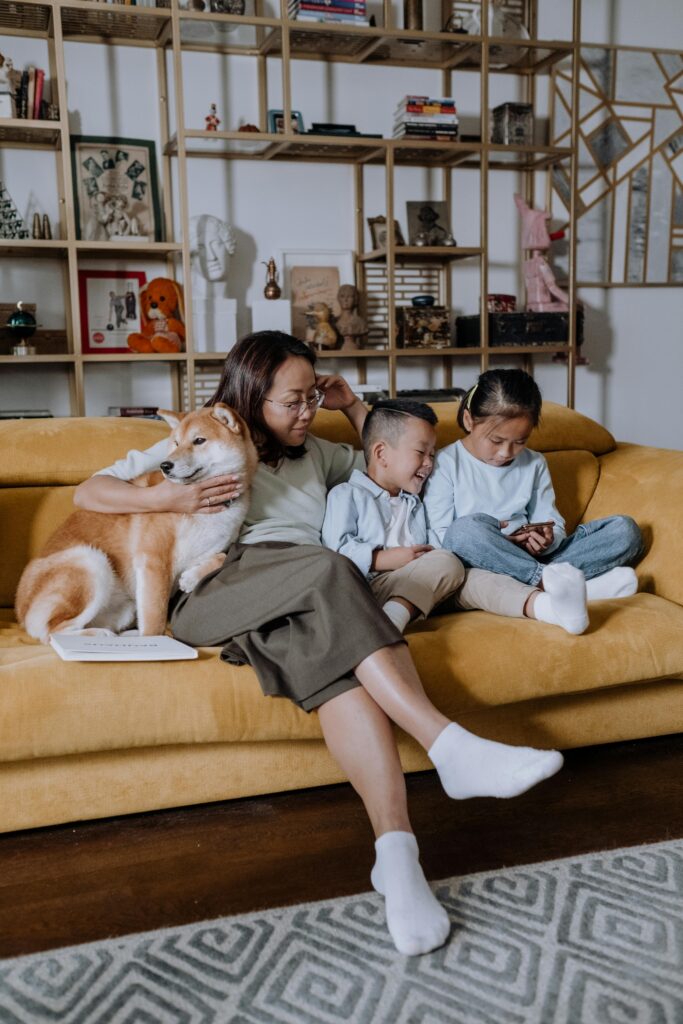Back-to-school season can sneak up fast. One week the house is full of activity, and the next it is eerily quiet between the hours of 8 and 3. While many families are busy prepping backpacks and class schedules, they often forget one important member of the household who will feel the change most: the dog.
Dogs thrive on routine and predictability. When kids suddenly disappear during the day or walk times shift, your dog may become confused, anxious, or even destructive. As a professional trainer, I see a sharp rise in behavior issues every fall. Many of these could be prevented with a little preparation.
In this post, we will cover how to help your dog transition smoothly into your family’s new schedule, avoid stress, and maintain good behavior as routines shift.
Why Back-to-School Affects Dogs More Than You Think
To a dog, your family’s daily rhythm is everything. They know when it is time for breakfast, when the kids usually get up, and when the door opens at the end of the day. A sudden disruption to that pattern can leave your dog confused or lonely.
Common signs of back-to-school stress include:
- Barking or whining during the day
- Chewing or digging when left alone
- Pacing, panting, or staring at doors and windows
- Sudden accidents in the house
- Loss of appetite or excessive sleeping
These are not just quirks. They are red flags that your dog is struggling with the change in routine.
Start Adjusting the Schedule Early
One of the most effective things you can do is begin transitioning your dog’s schedule a week or two before school starts.
Here is how:
- Move walk times to align with the new school-day routine
- Practice quiet time or crate time during school hours
- Feed meals at the same times you plan to use during the school year
- Limit midday play sessions to help your dog build tolerance for downtime
This type of gradual adjustment helps your dog adapt before the real disruption begins.
Keep Obedience Sharp to Curb Attention-Seeking
When dogs feel ignored or confused, they often act out to get attention. That is where obedience training becomes essential.
Daily practice of the following skills will help your dog stay calm and respectful:
- Place (helps with calm during homework or busy mornings)
- Down-Stay (great for morning chaos by the door)
- Come (to keep routines running smoothly)
- Leave it (to prevent scavenging dropped snacks or school supplies)
Our Basic & Advanced Obedience Program is especially effective at reinforcing these behaviors in unpredictable environments, whether your dog is home alone or dealing with shifting energy in the house.
Create a Calm Morning and Afternoon Routine
Mornings before school can be hectic. Kids are grabbing backpacks, parents are rushing out the door, and your dog may get caught in the middle. Without clear expectations, that chaos can lead to anxious energy.
Try this instead:
Morning Routine
- 5 to 10 minute walk or quick fetch session
- Obedience refresher (Sit, Down, Place)
- Calm breakfast in a designated spot
- Cue for crate time or calm resting area
Afternoon Routine
- Calm greeting (avoid rewarding jumping or barking)
- Walk or structured playtime
- Short training session with your kids
- Wind down with a chew toy or puzzle feeder
For extra support in managing energy indoors, especially during busy transitions, check out our post on keeping your dog active when it’s too hot outside. Many of those enrichment strategies work just as well when the family is unavailable during the day.
Help Your Dog Cope With Alone Time
Many dogs experience mild to severe separation anxiety during back-to-school season. It is not just the quiet. They miss the companionship, stimulation, and interaction. To ease that stress, focus on gradual independence and mental stimulation.
Try these tools:
- Crate training or a gated-off quiet space
- Long-lasting chew toys like frozen KONGs or marrow bones
- Puzzle feeders or snuffle mats
- Calming music or white noise
- Short practice departures that build up to longer alone time
If your dog struggles to settle on their own, these strategies help condition calm behavior even when no one is home.
Get the Kids Involved
As routines shift, encourage your kids to be part of the transition process. When they are home, let them take a few minutes to work on commands, offer a treat puzzle, or play a training game. This not only strengthens the bond, it provides consistency for your dog.
Need ideas? The American Kennel Club shares ways to teach kids and dogs to play together safely, which is perfect for back-to-school transitions when time and attention are limited.
Quick Checklist for Back-to-School Dog Prep
- Begin adjusting your dog’s schedule 1 to 2 weeks in advance
- Reinforce core obedience skills daily
- Build alone time tolerance with crate training and puzzles
- Keep mornings and afternoons structured and predictable
- Include kids in brief, supervised training interactions
Let Us Help You Transition With Less Stress
If your dog struggles with routine changes, anxiety, or attention-seeking behavior during the school year, we can help. Our Basic & Advanced Obedience Program equips your dog to handle distractions, downtime, and family transitions with confidence and calm.
Questions or ready to get started? Reach out to us through our contact page and let’s make this school year smooth for everyone, including your dog.


